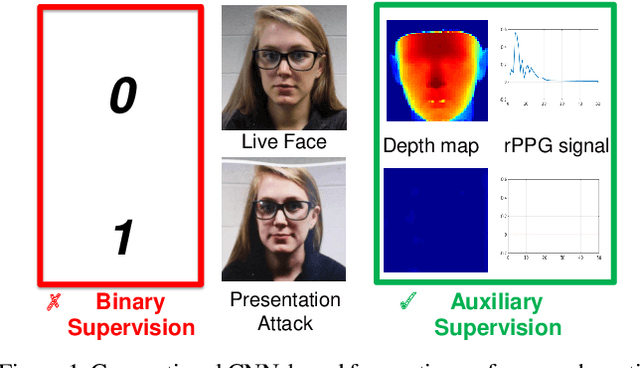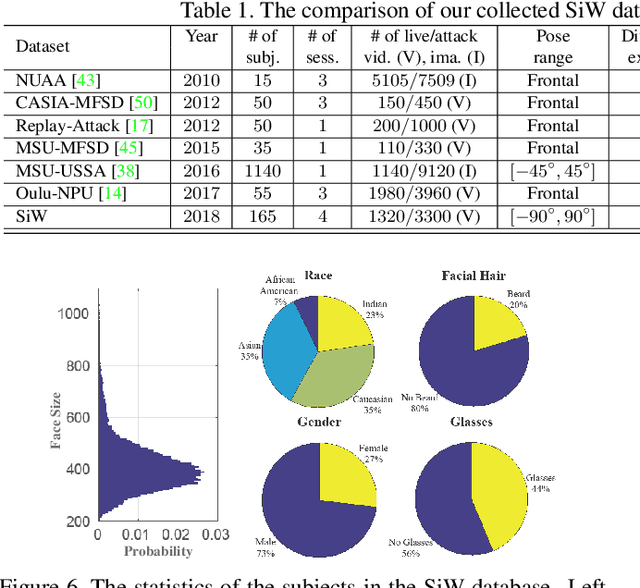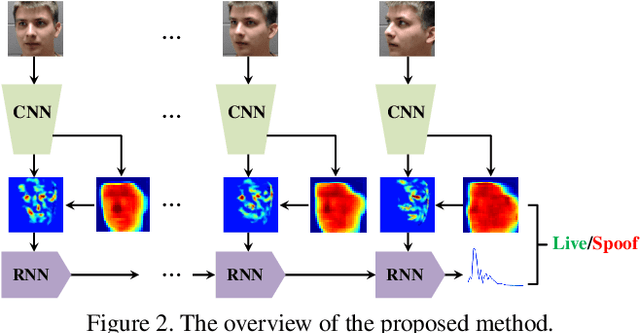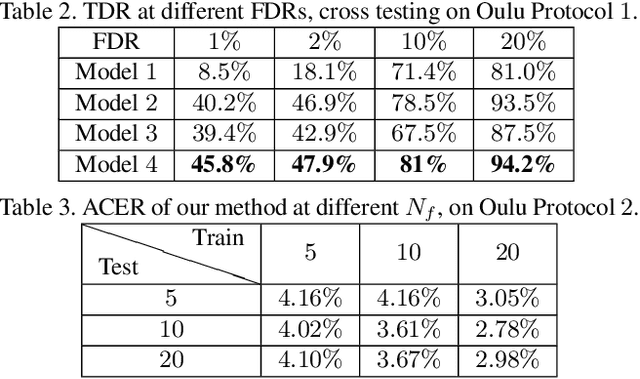Learning Deep Models for Face Anti-Spoofing: Binary or Auxiliary Supervision
Paper and Code
Mar 29, 2018



Face anti-spoofing is the crucial step to prevent face recognition systems from a security breach. Previous deep learning approaches formulate face anti-spoofing as a binary classification problem. Many of them struggle to grasp adequate spoofing cues and generalize poorly. In this paper, we argue the importance of auxiliary supervision to guide the learning toward discriminative and generalizable cues. A CNN-RNN model is learned to estimate the face depth with pixel-wise supervision, and to estimate rPPG signals with sequence-wise supervision. Then we fuse the estimated depth and rPPG to distinguish live vs. spoof faces. In addition, we introduce a new face anti-spoofing database that covers a large range of illumination, subject, and pose variations. Experimental results show that our model achieves the state-of-the-art performance on both intra-database and cross-database testing.
 Add to Chrome
Add to Chrome Add to Firefox
Add to Firefox Add to Edge
Add to Edge